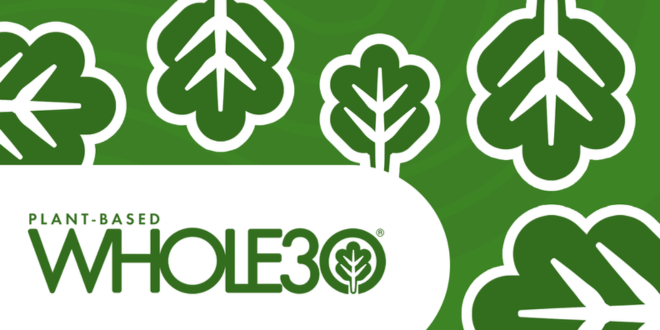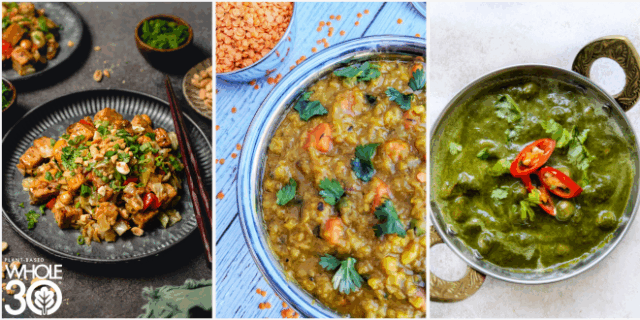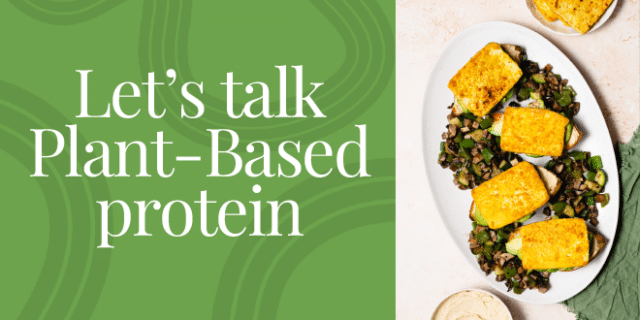The age-old question every plant-based eater gets is, “Where do you get your protein?” Most of us have grown up thinking protein only comes from animal sources. However, plant-based foods have protein, too.
In fact, there are so many good plant-based protein options. They can form a great base of amino acids. However, some plant-based foods have protein but shouldn’t be considered your primary source of protein. Instead, consider these foods as protein boosters—giving you a little dose of needed amino acids along with other important nutrients.
Protein boosters to add into your diet
You can add these boosters to your meals to increase the total amount of protein. For example, if you have one serving of tofu in the morning that provides around eight grams (g) of protein. But, if you want to get closer to 15g at breakfast time, you could add a protein booster to help you hit your goal without having to whip up a whole other meal or side dish.
Here are some good plant-based protein-booster options to consider:
Hemp seeds
Hemp seeds are a great source of complete protein and also provide essential fatty acids—hello, brain health! They have a mild, nutty flavor and you can add to salads, smoothies, or use to make homemade hemp-seed milk.
These versatile seeds have roughly three grams of protein per tablespoon.
Chia seeds
Chia seeds are small—actually, tiny is probably more accurate—but are packed with protein, fiber, and omega-3 fatty acids. They can be sprinkled over smoothies, added to fruit bowls, and even tossed into your water to make a fun beverage.
Chia seeds have roughly five grams of protein per tablespoon.
Nutritional Yeast
Nutritional yeast is different from what’s used to make bread or fermented beverages. It’s a deactivated yeast that has a nutty flavor. It is often fortified with additional nutrients, including protein and B12. Sprinkle it over roasted vegetables and use it as a seasoning in sauces and dressings. (Read more about how to use nutritional yeast throughout your plant-based diet.)
Nutritional yeast is a protein booster adding roughly five grams of protein per tablespoon.
Plant-Based Whole30 compatible protein powder
Protein powders are concentrated sources of protein that can be added to various recipes. Look for plant-based protein powders made from sources like pea, pumpkin seed, or hemp (like this one from Nutiva). You will also want to check the labels for any excluded ingredients or additives.
Protein powders vary in protein content but can range from 8-25g per serving, depending on which one you purchase.
Spirulina
Spirulina is a type of blue-green algae that is rich in protein and offers a wide range of nutrients, as well. It is considered a complete protein source, meaning it contains all the essential amino acids. This protein booster’s vibrant blue and green color is a perfect addition to smoothies or on top a soup or salad.
Spirulina has roughly four grams of protein per tablespoon.
Tips for boosting your protein intake
Increasing your plant-based protein is easy! And you don’t even have to closely track everything you eat to have success. Which is great, because, during your Plant-Based Whole30, meals are not tracked. Instead, follow the meal-planning template and incorporate some of the tips below to help secure a healthy flow of protein into your diet.
Here are a few of our favorite easy approaches to try:
- Prioritize protein-rich foods. Make sure to include a source of protein in every meal and snack. This can include legumes, tofu, tempeh, seitan, edamame, and lentils. Eat these options first to ensure you fill up before you get to them.
- Eat a variety of plant-based proteins. Different plant-based protein sources offer different amino-acid profiles and additional nutrients. It also helps fight food fatigue, too!
- Include protein at breakfast (or meal one). Start your day with a protein-rich breakfast. You can have a plant-based protein shake, tofu scramble, or add nuts and seeds to the top as your protein booster of choice.
- Pay attention to foods with crossover potential. Luckily in plant-based eating, many foods have macronutrient (fat, protein, and carbohydrate) crossover. That means some ingredients that may be predominately fat, like nuts and seeds, also can provide helpful protein, too.
- Snack on protein-rich foods. Opt for protein-rich options to snack on. Choosing a handful of nuts, roasted chickpeas, or enjoying some hummus with vegetables are great protein-booster snack options.
- Consider protein-rich supplements: If you struggle to meet your protein needs through food alone, consider incorporating a compatible plant-based protein powder. However, whole foods should always be your primary source of nutrients.
Start the search for your favorite protein booster today
Following the meal template and the general suggestions above should put you in a great spot with your protein intake. But there are always days when you feel like you need a protein booster—this usually happens when you have had an extra active day. That’s where protein boosters come in.
Overall, protein boosters are meant to add three to eight grams of protein to your meal. If you feel like you need more protein, you can opt for an option on the higher end. This flexibility is one thing that makes protein boosters so helpful and easy to incorporate. You can add protein boosters to almost any meal or snack.
And they come with the added bonus of other various nutrients—like omega3 fatty acids and fiber. So they can be a boost to other aspects of your nutrition, too!
















